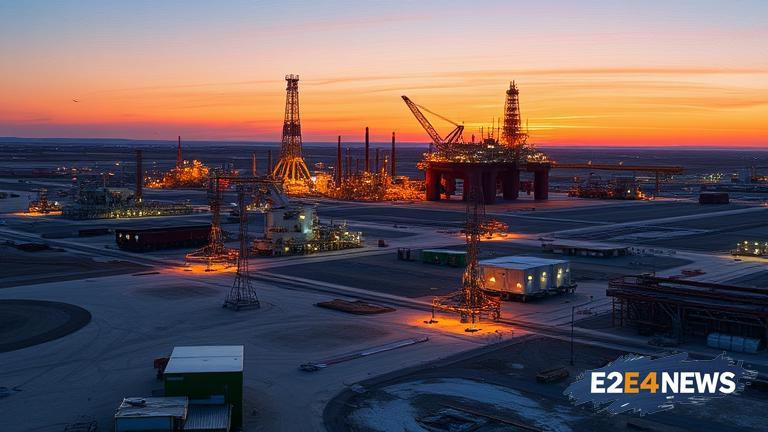The US shale industry has been a major player in the global oil and gas market, and its production horizon continues to expand with advancements in technology. Over the years, the industry has faced numerous challenges, including fluctuating oil prices, geopolitical tensions, and environmental concerns. However, with the help of innovative technologies, US shale producers have been able to increase efficiency, reduce costs, and improve their overall competitiveness. One of the key drivers of this growth has been the development of new drilling and completion techniques, such as hydraulic fracturing and horizontal drilling. These technologies have enabled producers to access previously inaccessible reserves, increasing the overall recoverable resource base. Additionally, advancements in data analytics and artificial intelligence have improved the accuracy of reservoir modeling, allowing producers to optimize their drilling and completion strategies. The use of machine learning algorithms has also enabled real-time monitoring of drilling operations, reducing the risk of accidents and improving overall safety. Furthermore, the development of new materials and equipment, such as advanced drill bits and downhole tools, has improved the efficiency of drilling operations. The increased use of automation and robotics has also reduced labor costs and improved overall productivity. Despite these advancements, the US shale industry still faces significant challenges, including the need to reduce its environmental footprint and improve its public image. To address these concerns, many producers are investing in new technologies, such as carbon capture and storage, and renewable energy sources, such as solar and wind power. The use of electric fracturing fleets, which reduce emissions and noise pollution, is also becoming more widespread. Moreover, the development of new water management technologies has improved the efficiency of hydraulic fracturing operations, reducing the amount of water required and minimizing the risk of water pollution. The US shale industry is also becoming increasingly digitalized, with many producers investing in cloud-based data platforms and cybersecurity measures to protect their operations from cyber threats. The growth of the US shale industry has also had a significant impact on the global energy market, with the US becoming a major exporter of oil and natural gas. This has led to increased competition with other major oil-producing countries, such as Saudi Arabia and Russia. However, the US shale industry is well-positioned to continue its growth, with many producers having already announced plans to increase production in the coming years. The industry is also expected to play a major role in the transition to a lower-carbon economy, with many producers investing in new technologies, such as hydrogen fuel cells and carbon capture and storage. In conclusion, the US shale industry continues to push its production horizon with advancements in technology, increasing efficiency and reducing costs. While the industry still faces significant challenges, it is well-positioned to continue its growth and play a major role in the global energy market. The development of new technologies, such as electric fracturing fleets and carbon capture and storage, will be critical to the industry’s long-term success. Additionally, the industry must continue to prioritize environmental sustainability and public safety, investing in new technologies and practices that minimize its impact on the environment and local communities. The future of the US shale industry looks bright, with many opportunities for growth and innovation. As the industry continues to evolve, it is likely that we will see even more advancements in technology, leading to increased efficiency, reduced costs, and improved overall competitiveness. The US shale industry is a major player in the global energy market, and its continued growth and innovation will be critical to meeting the world’s increasing energy demands. With the help of innovative technologies, the US shale industry will continue to push its production horizon, increasing the overall recoverable resource base and improving the efficiency of drilling and completion operations. The industry’s commitment to environmental sustainability and public safety will also be critical to its long-term success, as it works to minimize its impact on the environment and local communities.
